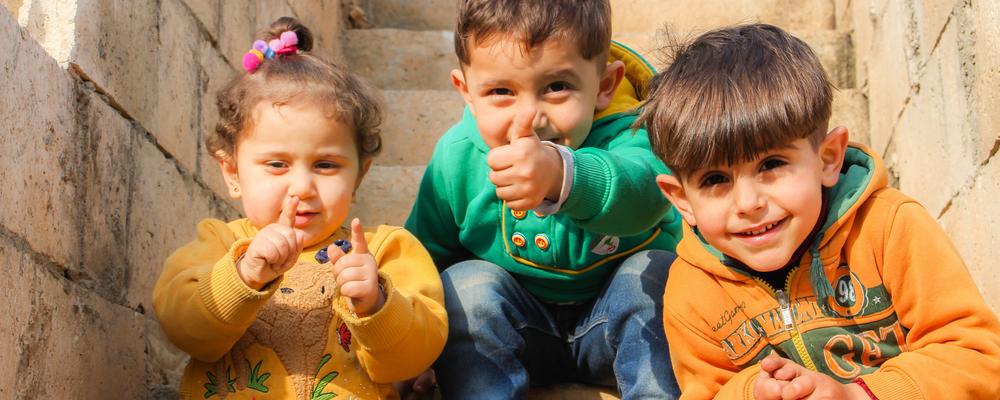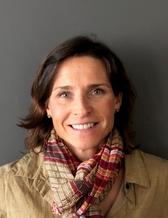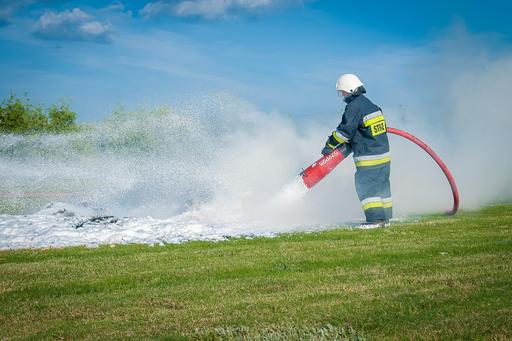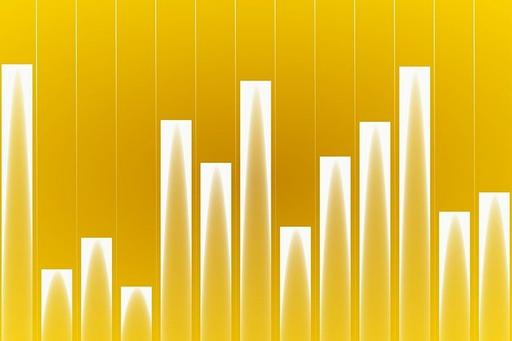
- Home
- Research
- Find research
- A population-based study on language development in children after exposure to perfluorinated substances (PFAS)
A population-based study on language development in children after exposure to perfluorinated substances (PFAS)
Charlotte Stübner, PhD student, tells us all about her research at the GNC.

First of all, I wonder if you can tell me a little bit about yourself?
I trained as a speech therapist in Gothenburg. Since I finished my studies, in 2006, I have been employed at Queen Silvia's Children's Hospital, Sahlgrenska University Hospital. My clinical work has mainly been focused on children's language development and assessment of reading and writing difficulties/dyslexia, but for a period of time I was also part of a team that works with people born with cleft lip, jaw and palate.
What piqued your interest in research? What questions are you interested in, how did you get into this particular research?
The last year of my undergraduate studies included a Master's studies, which was both fun and challenging, and when it was finished and submitted I realized that I had caught the research bug. At the same time I wanted to work clinically both to gain experience and because it is rewarding and interesting. During the years of working clinically, I also took courses for example one on evidence-based medicine and one on syndromes in children. I also completed a Master’s degree in speech therapy which was concluded by a study on children with mild to moderate hearing loss and their language ability.
Doing research in language development is a natural extension of my clinical work. Finding out why something is a certain way, is important for adapting care to condition and cause, but also because patients and their families want to know. By knowing more, we can develop how we investigate speech and language development in children and find new forms of treatment.
You are a doctoral student at the GNC, what is your project about?
The project is about investigating possible connections between perfluorinated chemicals (PFAS) and children's language development. Language development is affected by both genetic and environmental factors and we know that children with early identified language difficulties are at a higher risk for persistent language difficulties in early school age but also increased risk of neuropsychiatric and neurological difficulties.

PFASs generally occur in our environment nowadays and there are more and more reports of high levels, including in contaminated water sources. These are substances that have been produced and have been used since the 1940s and have desirable properties. Among other things there are water, dirt and oil repellent. They are available in textile impregnation, ski wax, make-up, food packaging and previously also in firefighting foam. Nowadays, the use of these substances is limited in part by legislation, but they have a long degradation time and are not degraded by biological processes but accumulate in animals and humans. We do not know how high exposure levels of PFAS affect children's development, but the evidence from background-exposed populations raises questions. From what we know today PFAS is transmitted from mother to child during pregnancy and breastfeeding and there are indications that PFAS affects children's language development, learning, cognition, attention, behaviour and motor skills.

The studies are population-based with a focus on language development in children after prenatal and/or postnatal exposure to PFAS. In 2013, the drinking water from one of two municipal waterworks in Ronneby was noted to be very heavily polluted by a number of PFAS substances, mainly PFOS, PFHxS and PFOA. The source of the pollution was extinguishing foam, which had been used at a fire drill site close to the water source since the early 1980s. It is unclear when PFAS reached the water source. The contaminated water has been distributed to 1/3 of the municipality's households and studies have shown that the exposed population has 20-100 times higher serum levels of these substances than the rest of the background-exposed population in Sweden. The studies are partly register-based, but we also collect data by following the development in several areas of a group of mothers and their children. If we find that children who have been exposed to PFAS have increased language difficulties, we can be aware of this and offer interventions as well as be vigilant about whether the language difficulties also co-exist with other difficulties.

An aim of the project is to provide information on the effects of high and low PFAS exposure on the occurrence of language, behavioural and other developmental difficulties. This is important in order to be able to assess future risks for children and to take a stance on whether exposed individuals need increased check-ups in maternal, child and student health. Both internationally and nationally, there are occasional reports of elevated levels of PFAS in our environment. Finding out more is also important in order to be able to respond to parents' worries and concerns related to prenatal transmission of PFAS from mother to child, during breastfeeding and direct exposure.
Why did you choose this particular subject for your doctoral studies?
My main supervisor, Professor Carmela Miniscalco Mattsson, who is a speech therapist and does research on children's language development, was asked to contribute to the research concerning the PFAS exposure in Ronneby. As children's language development is something that is screened for in the majority of all children in Sweden, there is extensive data on children's language development. Based on data on children who have been referred to a speech therapist throughout Blekinge, (where Ronneby is located) we now have a basis for exploring this. Carmela was the main supervisor for my Master's thesis and when I expressed interest in doing research, I was asked to enter the project as a doctoral student.
What are you working on right now?
We have now collected register data on children's language diagnoses in Blekinge and will link this to whether the mothers have lived in a high, medium or background-exposed area. In parallel, I am collecting information from the group of mothers and children that we follow. The plan is for us to conduct language assessments of the children when they are 5-6 years old.
What challenges do you expect?
To get acquainted with, for me, new areas such as epidemiological research and learn about the substances PFAS and how they have different effects at different times during children's development. It will be challenging but fun and interesting.
What aspects of your doctoral studies do you like the most? What is most difficult?
To learn new areas and to have the opportunity to delve deeper and learn about other people's research. It is an education, which I sometimes forget, and when I look back from when I started two years ago, I have learned a lot of new things that I did not expect, which is positive. The most difficult thing is when I get writers block or when I have to do something and do not know how to solve it. Then, unfortunately it sometimes means extra work. Also keeping on top of statistics and being able to interpret what the statistics say is difficult.
